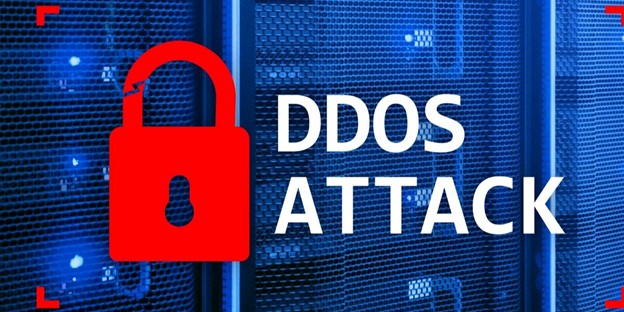
In today’s digital climate, where both businesses and individuals rely on the internet, ensuring our cybersecurity is more important than ever. One of the biggest challenges we face that can disrupt our online operations is a Distributed Denial of Service (DDoS) attack. Go through this blog to learn how businesses can defend against DDoS attacks with secure hosting!
Distributed Network Attacks, or DDoS attacks, disrupt online services. They exploit the limits of network resources, like the infrastructure that supports a company’s website. Essentially, a DDoS attack bombards the targeted web resource with a flood of requests, aiming to overwhelm it and prevent the website from functioning as it should. Some typical targets for DDoS attacks are:
Network resources, like web servers, can only handle a certain number of requests simultaneously. Along with the server’s capacity, the Internet connection has bandwidth limits. When the number of requests goes beyond what any part of the system can manage, it may affect the level of service in a few ways:
If you have recently experienced issues and are on the journey to find a top-notch DDoS protection service, you won’t have to search high and low. Just reach out to OffshoreServers.NET for outstanding services that truly have your back.
While it might be challenging to eliminate the risk of a DDoS attack, implementing robust cybersecurity measures can significantly reduce its impact and keep you better protected from impact. Here’s how to prevent DDoS attacks on websites:
DDoS mitigation services, provided by specialized cybersecurity firms, identify and mitigate DDoS attacks in real-time using hardware and software solutions. They analyze incoming network traffic and quickly filter out malicious requests during an attack, allowing legitimate traffic to reach the target server.
These services, designed for large-scale attacks, help protect an organization’s network infrastructure. With expert tools, they minimize the impact of attacks and keep online services accessible to legitimate users. We will say that you always get the top DDoS mitigation hosting providers if you want to skip the hassle.
Load balancing spreads traffic across servers to prevent overloading one server. During a DDoS attack, it evenly shares traffic, avoiding bottlenecks and service disruption. Load balancers, whether hardware or software, monitor traffic and utilize algorithms like round-robin, the least connections, or weighted distribution. This technique mitigates DDoS attacks and enhances system performance through optimized resource use.
DDoS attacks have evolved significantly over the past decade. Initially targeting Layers 3 and 4 with volume-related issues, they now affect multiple layers, networks, transport, sessions, and applications, often at once. Attackers employ advanced techniques to disrupt legitimate traffic and implement complex strategies.
To effectively prevent DDoS attacks, a comprehensive, multi-layered protective strategy is crucial. This strategy should encompass specialized measures for application-layer DDoS attacks, scalability, built-in redundancies, traffic monitoring, detection of business logic flaws, and strong vulnerability management to ensure safety. Only the best DDoS-protected hosting providers understand how to achieve this.
If you’re on the hunt for an offshore storage server and unsure where to start, don’t worry. Just reach out to OffshoreServers.NET, and we’ll be here to assist you immediately.
Rate limiting protects against DDoS attacks by controlling network traffic volume with set request limits over time. If limits are exceeded, excess traffic may be dropped or delayed. This technique can be applied at the network, application, or DNS level to prevent resource overloads from DDoS attacks, but careful configuration is needed to avoid blocking legitimate traffic.
Applying rate limits to API endpoints helps prevent abuse and reduces DDoS risks, though inaccurate algorithms may impact legitimate users. To choose the right approach, Web Application and API Protection offer AI/ML-driven behavioral analysis for optimal rate limits, using strategies like geo-restriction and reputation-based access to enhance DDoS protection attacks.
Creating a DDoS attack threat model is crucial for analyzing risks to your online service. Here’s a structured approach:
DDoS attacks have a few quite obvious telltale signs. You might notice things like spotty connectivity on your intranet, intermittent shutdowns of your website, or even disconnections from the internet. It’s important to remember that these symptoms can also resemble other issues with your system, such as viruses or a slow internet connection.
If these problems worsen and last longer than usual, your network may be under a DDoS attack. Taking steps to prevent further issues and protect your network is crucial. Here are some helpful warning signs to look out for if you suspect a DDoS attack:
Safeguarding your online presence from DDoS attacks is crucial in today’s digital landscape. Businesses can shield their operations by implementing strong protections, using secure hosting, and remaining vigilant. Prioritizing cybersecurity keeps services running smoothly, builds customer trust, and fortifies your website against emerging threats. Join forces with OffshoreServers.Net, and let’s be proactive together!
We Accept Bitcoin, Litecoin, Dash, PayPal & Perfect Money